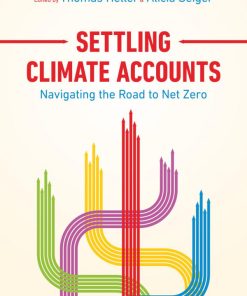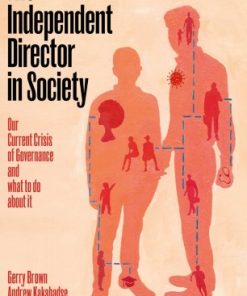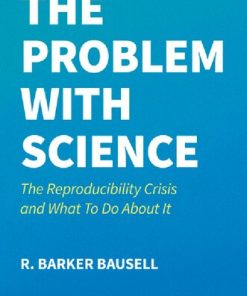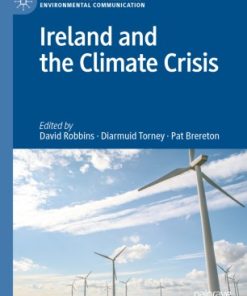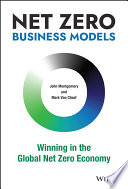(Ebook PDF) Reaching Net Zero What It Takes to Solve the Global Climate Crisis 1st Edition by William Fletcher, Craig Smith 0128235578 9780128235577 full chapters
$50.00 Original price was: $50.00.$25.00Current price is: $25.00.
Reaching Net Zero: What It Takes to Solve the Global Climate Crisis 1st Edition by William D. Fletcher, Craig B. Smith – Ebook PDF Instant Download/DeliveryISBN: 0128235578, 9780128235577
Full dowload Reaching Net Zero: What It Takes to Solve the Global Climate Crisis 1st Edition after payment.
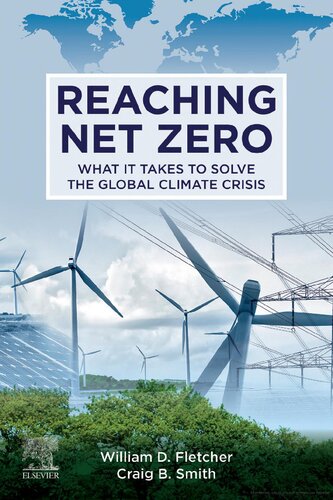
Product details:
ISBN-10 : 0128235578
ISBN-13 : 9780128235577
Author: William D. Fletcher, Craig B. Smith
Reaching Net Zero: What It Takes to Solve the Global Climate Crisis addresses the imminent need to fully understand the causes, effects, and evidence of global warming; due to the large amount of climate disinformation and complexity of much of the available valid science, this book addresses the science of global warming in a concise, readable manner while providing an in-depth reference for readers who want more details or to study the sources of information. This book also investigates potential practical next steps of interest to concerned scientists, engineers, and citizens, with an aim to further discuss and achieve the eventual Intergovernmental Panel on Climate Change (IPCC) ‘Net Zero’ goals. Solving the problem of reaching net zero requires educating others to support the changes that must occur and to provide the possible solutions required. This is a necessary read for academics in climate and environmental science, and specialists such as those in earth science or environmental studies, covering the science, technology, economics, politics, international, and other issues involved in doing something about global warming. It is also important for those interested in global warming and anyone involved in decision-making processes and legislation that deal with reduction in carbon footprints.
Reaching Net Zero: What It Takes to Solve the Global Climate Crisis 1st Table of contents:
1 Introduction
Should we be concerned about global warming?
What about solar radiation?
The greenhouse effect
What are the greenhouse gases?
What are the signs of global warming?
What are the dangers of global warming?
Can anything be done about global warming?
2 Addressing global warming
Latency is a huge problem
Global warming is not obvious to the vast majority of people
The global economy is powered by fossil fuels
There is a need for unprecedented and perhaps unachievable international cooperation
All of us will have to be willing to accept changes
U.S. participation is essential
What can be done?
I
3 The earth as a system
Incident solar radiation
Milankovitch cycles
More about the greenhouse effect
Carbon cycle
Temperature increase
4 Fundamental drivers of global warming
Global population rising
Inequities: the early role of the United States and the United Kingdom
The pivotal position of the United States
Need to consider both absolute and per capita emissions
Gross domestic product growth and energy use are related
More energy will be required by developing countries
5 How do we know global warming is real?
Global warming is not a new idea
CO2 emissions are rising
Earth’s temperature is rising
Correlation of increasing global temperature with increasing atmospheric CO2
Ocean temperatures are rising
Sea levels are rising
Ocean acidification is occurring
A message from the Arctic?
Glaciers, ice caps, and sea ice are melting
The permafrost is melting
Extreme weather events are increasing
Deserts and tropics are expanding
Rising temperatures are causing plant, animal, and human migration
Early warning signs of global warming: a California case history
6 How do we know man-made CO2 is the issue?
Where do man-made greenhouse gases come from?
What happens to CO2 emissions?
The significance of carbon-14
Historic emissions since the Industrial Revolution
Increases in atmospheric CO2 correlates with fossil fuel use
What is your carbon footprint?
7 What are the effects of global warming?
Latency—how long before effects show up?
Climate change versus weather
Earth’s temperature will continue to rise
Air pollution will increase
Sea levels rise causing flooding
Oceans become more acidic
Glaciers, ice caps, and sea ice melt
Subsidence occurs and permafrost melts
Deserts and tropics expand
Species migration and extinction
Frequency and severity of storms
Impact on agriculture, droughts, loss of cropland, and wildfires
Health problems will be more severe
Could global warming cause a financial crisis or some other financial problem?
National security implications
Migrations caused by climate change
Tipping points: unanticipated changes can occur
8 International efforts to address global warming
Early efforts
The Intergovernmental Panel on Climate Change
The Paris Agreement
Intergovernmental Panel on Climate Change special reports
History of Intergovernmental Panel on Climate Change global warming objectives
II
9 What would it take to reach net zero?
Intergovernmental Panel on Climate Change alternative scenarios
What would it take?
Are the Intergovernmental Panel on Climate Change scenarios realistic?
Carbon removal
What is a more likely scenario?
Are we too late already?
Doing nothing is not an option
What will happen if we do nothing?
The high cost of doing nothing
10 Energy alternatives
Fossil fuels: coal, oil, and natural gas
Nuclear power
Renewable energy
11 Unique problems of major contributors to global warming
What can we learn from Germany?
The United States fails to take a leadership position
China—Will it be the leader?
India—large population, little energy
Japan—strong technological capabilities
Russia—may not be a player
Observations
12 Why is global warming such a difficult problem to solve?
The need for unprecedented, perhaps unachievable, global cooperation
Fossil fuels are heavily subsidized
Educating the public
The media have not dealt fairly with global warming
Public uncertainty
A positive message is needed
Public support for government action
Why it is hard to replace fossil fuels?
Solving technical challenges
The need for strong economies
Understanding climate change skepticism
Recognizing political leaders can make mistakes
Acknowledging that failure is a possibility
13 Some successes and failures
The Permian Basin, a renewable energy powerhouse
1970s oil price hikes
Automobile emissions
Hole in the ozone layer
Cigarette smoking and cancer
Europe’s push for diesel vehicles
Nuclear power in the United States
Is there a future for nuclear power?
Ethanol
High-speed rail
Lessons learned
III
14 Action Plan: efficiency, power, transportation, and land use
Do we need another moon shot?
The challenges of a global approach
An Action Plan, assuming we cannot get to net zero by 2050
Can the Intergovernmental Panel on Climate Change’s goal of keeping global warming under 2°C be m
Why can’t we do better?
Silver bullets
Mitigation
Carbon fee
15 Can it be done?
The trend is our friend
Can renewable energy power the world?
Can wind power the world?
What would it cost?
Can we afford it?
16 The way forward
The future can be bright
Top priorities
Government actions
Actions for concerned citizens
Actions for industry
What next?
Afterword
Further reading
Useful reports
Useful websites
IV Appendices
People also search for Reaching Net Zero: What It Takes to Solve the Global Climate Crisis 1st:
government policy on reaching net zero by 2050
why is reaching net zero by 2050 important
what does reaching net zero mean
environment agency reaching net zero by 2030
what are the problems with reaching net zero
You may also like…
Business & Economics - Management & Leadership
Business & Economics - Small Business
The Essential Entrepreneur: What It Takes To Start, Scale And Sell A Successful Business 1st Edition
Politics & Philosophy - Sociology
Pressure cooker: why home cooking won’t solve our problems and what we can do about it
Science (General) - Science of Science
Crime
(EBook PDF) It Takes Two to Mango 1st edition by Carrie Doyle 1728232341 9781728232348 full chapters
Earth Sciences
Business & Economics - Management & Leadership



